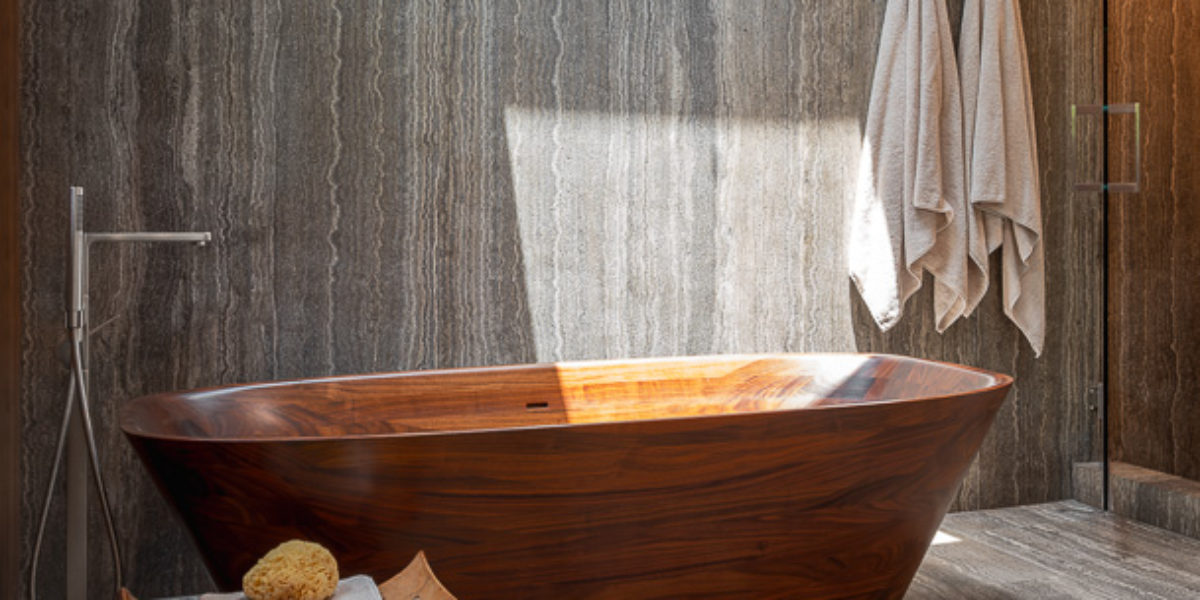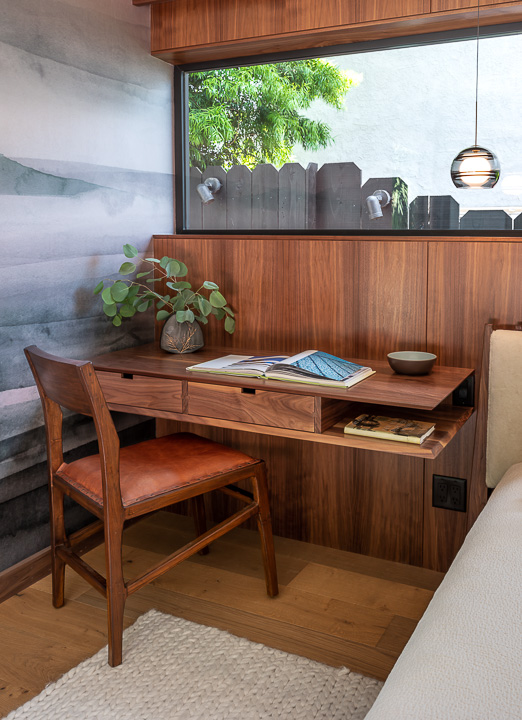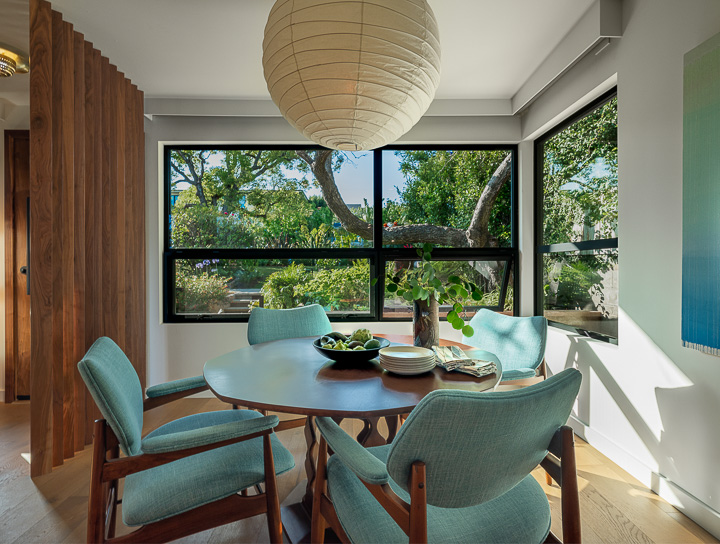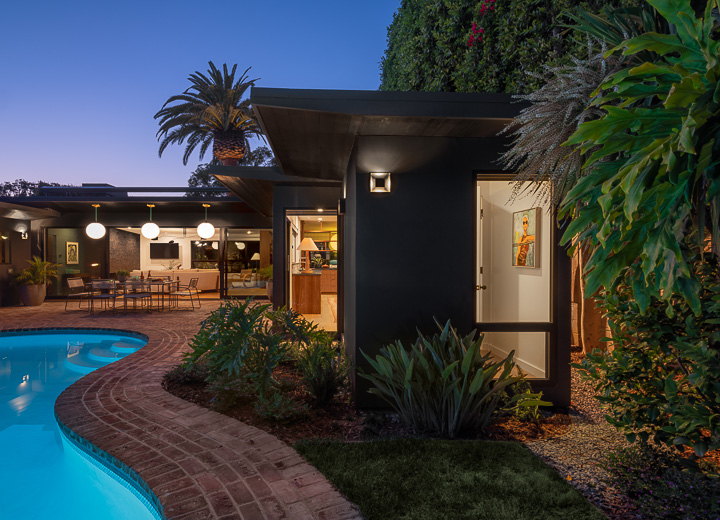
A Wooden Tub Made for Bath Lovers, Plus More Ideas from a Tiny, Walnut-Clad West L.A. Gem
To prevent a buyer from swooping in and tearing down a mid-century jewel box house, a homeowner, architect, and interior designer team up to restore it to its original wood-clad glory.

When Blythe Home interior designer Stacey Copeland’s client, Elizabeth Thornton, approached her with a new project—the restoration of a “tidy but tiny” two-bedroom, one-bathroom mid-century cottage with a kidney-shaped pool—Thornton knew she was defying conventional Los Angeles real estate wisdom. She bought the house, which backed up to her home on a gently sloping hill, with no intention of expanding its footprint, or tearing it down and building a new structure that would sell for millions more. Her goal was to restore it, and prevent someone else from replacing it with a massive 4,000-square-foot house, like others that were popping up in her neighborhood, and therefore ruin her view. Once it was finished, Thornton would rent it. And if all went well, she’d maintain her privacy and the house would pay for itself.

Meghan Beierle-O’Brien
There was one hitch. As a newly single woman whose youngest child was about to leave for college, buying and restoring a house was the last project she thought she’d dive into. She was supposed to be downsizing, after all.

Steve King
“Then Elizabeth imagined the 4,000-square-foot house that would replace it,” says Copeland, with an implied shudder down her spine. “Then she did what everyone cautioned her not to do, and she bought the house.”
Luckily, Copeland introduced Thornton to Jill Swisher of Seed Architecture, who also saw the potential in the existing footprint and layout and had a vision to make it happen, and talented landscape designer Andrea Scharff. The four 50-something women, plus contractor Dennis Mills, collaborated to update the home with a focus on woodwork, like custom walnut cabinetry, paneling, and a built-in desk, that felt true to the vision of the original builders.

Steve King
But the house’s major “wow” moment happens in its only bathroom. Leathered travertine covers the walls, and a carved walnut tub sits in the center of the room under a generous skylight.
“The wood bathtub was something Elizabeth spotted,” says Copeland. “It’s made by an Austrian craftsman, Nina Mair, of carved walnut. She showed it to Jill and me and we thought it was just bananas, but in the best way possible. The decision to clad the bathroom in leathered travertine came after the tub was chosen, as we loved the way the two materials played off of each other. You can really say the tub set the tone for the entire remodel. “

Steve King
The advantages of a wooden tub: It’s always warm and soft to the touch, and it adds an unexpected organic element to a bathroom. Depending on the wood, it can release a fragrance when it makes contact with water. And it’s a natural material that won’t sit in a landfill once it’s no longer in use. It needs to be treated with a waterproofing agent. Wood can dry out, so it should be used frequently. And it can be quite an expense. But it’s difficult to deny the luxurious home-spa feeling it brings to this small bathroom retreat.

Steve King
Just as the house was nearing completion, the coronavirus hit. Thornton’s adult children came back home. And the cottage, connected to the main house by a garden stairwell, was the perfect retreat to roost with her new partner.
“It was a pied-à-terre and a swim club for the family, all in one,” says Copeland. And the bathroom spa retreat by the ocean she never knew she always wanted.
More Wood Tubs to Explore
We only recommend things we love. If you buy something through our site, we might earn a commission.
